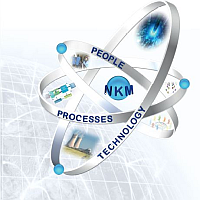Speaker
Mr
Jouni Silvennoinen
Description
The Olkiluoto 3 (or OL3) nuclear power plant project in Finland is a multi-billion capital project started in 2004. Despite a number of delays with construction the project is expected to complete commissioning and start-up in the near future. One of the current challenges it faces is to ensure pay-back on the investment, and a key contributing factor will be effective knowledge management (KM) to ensuring the capability to operate, maintain, and if and when necessary, modify the plant.
There have been many issues and lessons-learned with respect to KM. A good example is the management of the plant's design data during the project. In particular, how to approach the management of design compliance. Understanding the maturity of the design is important, and great care must be taken to assess the scope and impact of design changes. In order to ensure a consistent set of design documentation, great care must be taken to ensure the information content in the design documentation set is clear, concise, consistent, correct, and complete. Information quality is also a challenge. It must be possible to show the design and its implementation are compliant, that the allocation and realization of design requirements is traceable and verifiable. This all requires an intense effort around design document administration, and there is much data and metadata to be properly systematically organized and kept accessible and under configuration control. A prime example would be that of the I&C design compliance management.
Another significant KM challenge has been the need to build-up adequate technical competencies to support the plant during start-up and operation. A more critical example is the necessity of having knowledgeable system engineers who understand the functions and safety relevance of the structures, systems and components in detail and can be relied upon to make effective risk-informed decisions as problems are encountered. To achieve this, one of TVO’s strategies is building "capability clusters" whereby plant staff are cross-trained and able to act as back-ups for each other. This means a systematic approach to training is targeted at building a cluster of competence.
This paper will discuss and highlight these and other key lessons learned with respect to KM on the OL3 new build project.
| Country or International Organization | Finland |
|---|
Author
Mr
Jouni Silvennoinen

